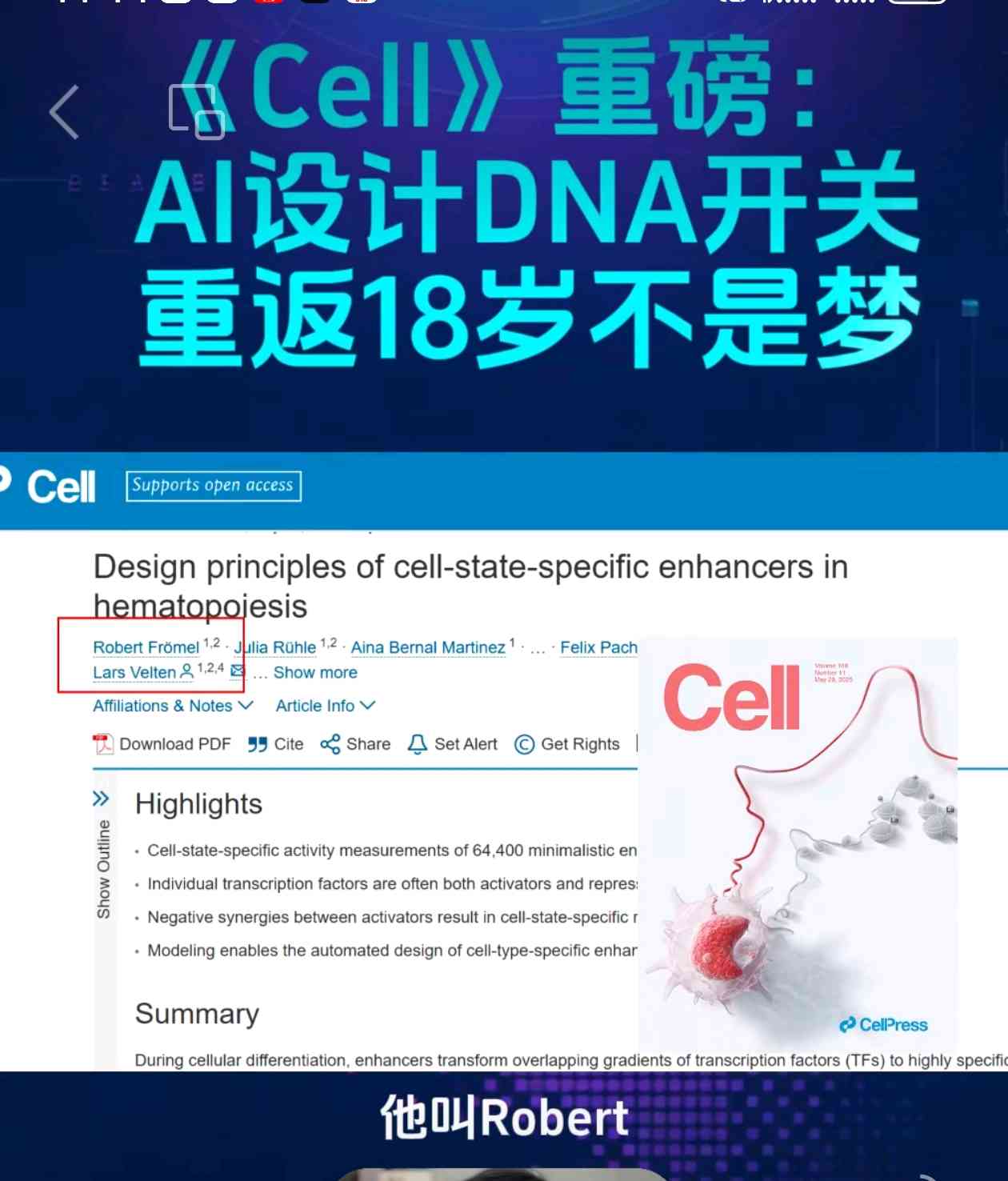

《Cell》最新研究中,巴塞罗那基因组调控中心(CRG)团队借助生成式人工智能,设计出自然界无先例的DNA调控序列,首次在健康哺乳动物细胞(如小鼠血细胞)中成功调控基因表达。其AI工具可按特定需求(如在分化为红细胞的干细胞中开启基因)生成合成DNA片段,经化学合成后导入细胞,精准激活荧光蛋白基因,且不改变基因表达模式。团队耗时五年,合成超6.4万种合成增强子,构建血细胞中最大的合成增强子库,探究发现转录因子与增强子存在“负协同效应”(部分因子组合可逆转基因活性)。该研究为基因疗法开辟新路径,可精准调控细胞/组织基因活性、减少副作用,还推动生成生物学发展,为设计超选择性基因开关、引导细胞发育(如潜在的“重返年轻”应用)奠定基础,是基因调控领域的重要里程碑,有望重塑细胞行为调控与疾病治疗模式。
In the latest research in Cell, a team from the Centre for Genomic Regulation (CRG) in Barcelona used generative artificial intelligence to design DNA regulatory sequences unprecedented in nature, successfully regulating gene expression in healthy mammalian cells (e.g., mouse blood cells) for the first time. Their AI tool generates synthetic DNA fragments tailored to specific needs (e.g., activating genes in stem cells differentiating into red blood cells). These fragments, chemically synthesized and introduced into cells, precisely activate fluorescent protein genes without altering gene expression patterns. Over five years, the team synthesized over 64,000 synthetic enhancers, building the largest synthetic enhancer library for blood cells. They discovered "negative synergy" between transcription factors (some combinations reverse reverse gene activity). This research opens new avenues for gene therapy (precise gene activity control in cells/tissues, reducing side effects) and advances synthetic biology. It lays the foundation for designing ultra-selective gene switches and guiding cell development (e.g., potential "rejuvenation" applications), marking a milestone in gene regulation, poised to reshape cell behavior control and disease treatment.
